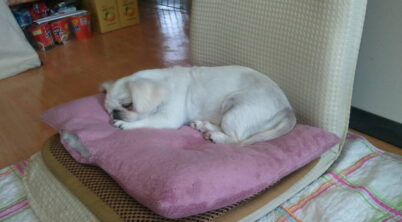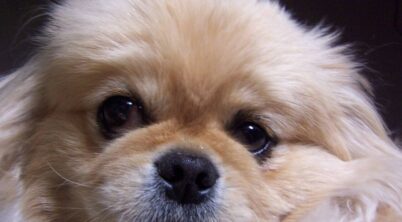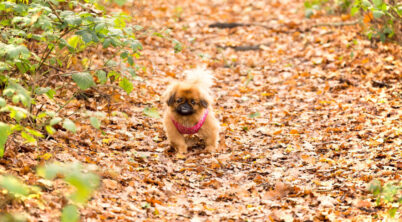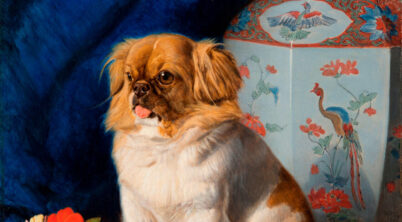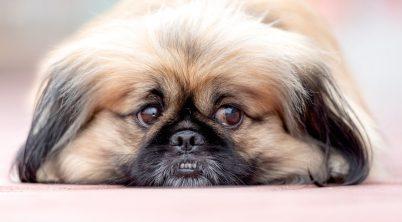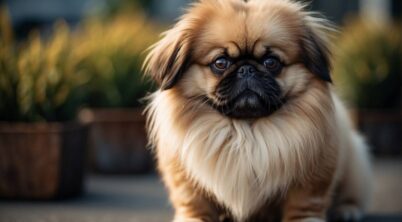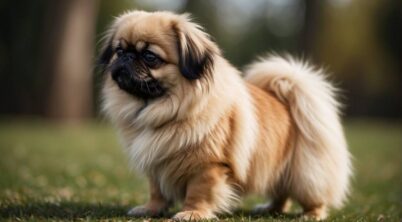Table of Contents
Uncovering Causes and Effective Treatments
Alopecia is a condition commonly encountered in the Pekingese breed, which can lead to partial or complete hair loss. This specific ailment is not exclusive to the Pekingese, but given their luxurious coats, the effects can be particularly noticeable. The causes range from allergies and hormonal imbalances to stress and genetic factors. In Pekingese, the impact of alopecia not only alters their appearance but can also indicate underlying health concerns that require attention.
Understanding and managing alopecia in Pekingese involves a multifaceted approach. Since this breed is known for its distinct long coat, any loss of hair can be a cause for concern among owners. A balanced diet is fundamental to maintaining healthy skin and fur. However, noticing the signs of hair loss early and seeking veterinary advice is crucial to address potential health issues promptly and prevent further deterioration.
The Pekingese dog presents challenges with its unique skin concerns, compounded by dense fur and skin folds, which may exacerbate skin issues. Addressing the problem necessitates a careful regimen of care, tailored to the individual dog’s needs, and may include special grooming practices to maintain skin health. The breed’s history as an ancient and regal canine only reinforces the importance of preserving their well-being, ensuring these dogs maintain their dignified appearance and comfort.
Understanding Pekingese Alopecia
Pekingese alopecia involves a spectrum of hair loss issues, often linked to genetic, environmental, and health-related triggers. Recognizing the underlying causes is key to managing this condition in Pekingese dogs.
Causes of Hair Loss
Hair loss in Pekingese can be influenced by a range of factors:
- Allergies: Allergic reactions can lead to skin inflammation and subsequent hair loss.
- Infections: Bacterial or yeast infections of the skin can disrupt hair follicles.
- Hypothyroidism: An underactive thyroid gland may result in alopecia.
- Hyperadrenocorticism: Also known as Cushing’s disease, this condition stems from overactive adrenal glands and can cause hair loss.
- Dermatitis: Skin inflammations due to dermatitis can lead to excessive scratching and hair loss.
- Stress: Psychological stress can occasionally trigger hair loss in dogs.
Genetic Factors
Certain genetic predispositions may cause Pekingese dogs to be more susceptible to alopecia:
- Inherited Conditions: Some Pekingese may inherit a predisposition to skin problems that result in hair loss.
- Hair Follicle Structure: Abnormalities in hair follicle structure can be inherited and lead to weak hair prone to falling out.
Environmental Triggers
Environmental influences that can contribute to hair loss include:
- Diet: Nutritional deficiencies or lack of a balanced diet can affect coat health.
- Climate: Extremes in weather can stress the dog’s skin and hair.
- A clean and stress-free environment is important to maintain healthy skin and coat.
By addressing these specific concerns through accurate diagnosis and tailored treatment, the effects of alopecia in Pekingese can be managed effectively.
Symptoms and Diagnosis
In addressing alopecia in Pekingese dogs, it’s crucial to recognize the symptoms and understand the diagnostic methods that veterinarians use to identify the underlying cause of hair loss.
Recognizing Alopecia
The initial signs of alopecia in Pekingese may manifest as patchy hair loss, which can progress to more extensive baldness if not treated. Owners should observe their Pekingese for bald spots, thin hair, and signs of skin irritation such as redness, bumps, and inflammation. Itching and scratching are common indicators, as Pekingese may experience discomfort from skin conditions. The presence of mange, caused by mite infestation, or an allergic reaction can exacerbate the hair loss.
Veterinary Diagnostic Process
When presented with a case of alopecia, a veterinarian will initiate a thorough examination. They may conduct a series of tests to rule out bacterial or fungal skin infections, which can contribute to hair loss. These tests may include:
- Skin scrape: to check for mange or mite infestation.
- Culture test: to identify bacterial or fungal growth.
- Allergy testing: to determine if an allergic reaction is causing skin irritation.
The vet might look for the presence of “hot spots,” which are areas of intense itching and inflammation, often due to self-trauma from scratching. Through these diagnostic methods, veterinarians can formulate an effective treatment plan tailored to the Pekingese’s specific condition.
Treatment and Management
When managing alopecia in Pekingese dogs, a comprehensive approach involving medications and potential advanced treatments is essential. The treatment plan is often based on the underlying cause of hair loss and the severity of the condition.
Medications and Topical Solutions
Appropriate medication can play a crucial role in treating Pekingese alopecia. Treatments typically aim to control any underlying skin condition that could be causing hair loss. For instance, if the alopecia is associated with a bacterial infection, a veterinarian might prescribe antibiotics.
Melatonin supplementation is another option that veterinarians may consider. It can sometimes help in cases where the hair loss is thought to be related to seasonal changes or hormonal imbalances.
- Topical Solutions:
- Minoxidil: Not commonly used for Pekingese dogs, but might be recommended in certain conditions.
- Medicated shampoos: Can help in managing skin issues leading to hair loss.
Surgical and Advanced Options
In cases where medical treatments have proven ineffective, and the alopecia is of a significant cosmetic concern, surgery or more advanced treatments could be considered. However, one should note these options are relatively rare for this breed compared to medical management.
- Surgical Options:
- Hair transplantation: Not typically performed in dogs.
- Skin grafts: Rarely necessary but can be an option for severe cases.
It’s essential for Pekingese owners to consult with a veterinarian to determine the most appropriate treatment options for their pet’s specific condition.
Diet and Nutrition
Adequate diet and nutrition are crucial for maintaining the health of a Pekingese’s skin and coat. Specific foods and supplements can help in managing or preventing skin problems such as alopecia.
Role of Diet in Skin Health
Diet plays an essential role in the overall skin health of Pekingese dogs. A deficiency in key nutrients can lead to several skin problems, including alopecia. The skin relies on an array of nutrients to maintain its barrier function and to produce healthy hair follicles. Allergies are also a common cause of skin issues in Pekingese, and dietary management can be a component in controlling allergic reactions.
Recommended Food and Supplements
When considering a Pekingese’s diet to support skin health and prevent alopecia, the focus should be on a balanced diet rich in Omega Fatty Acids. These nutrients are vital for maintaining a healthy skin and coat.
- Foods to include:
- Protein sources like fish and lean meats (high in omega-3 fatty acids)
- Eggs (biotin and vitamin D)
- Blueberries and sweet potatoes (antioxidants)
- Supplements that may benefit:
- Omega-3 and Omega-6 fatty acid supplements
- B-vitamins such as biotin
- Vitamin A and E supplements
Consistent incorporation of these foods and supplements into a Pekingese’s diet can help reduce the risk of developing skin issues and may aid in the health of their coat.
Prevention and Care
Appropriate grooming and environmental management are vital in the prevention and care of alopecia in Pekingese dogs. These strategies can mitigate skin disorders, reduce stress and exposure to irritants, and prevent parasitic and bacterial infections that may lead to hair loss.
Grooming and Skin Care
Regular grooming is crucial for Pekingese dogs to maintain healthy skin and coat. A Pekingese’s dense coat requires daily brushing to prevent mats and tangles, which can irritate the skin and contribute to hair loss. Using a suitable brush designed for long-haired breeds can efficiently remove loose hair and distribute natural skin oils.
Baths should be given with a gentle, dog-specific shampoo every three months or as needed to keep their skin clean and to remove potential irritants. However, owners should take care not to over-bathe as this can strip the skin of its natural oils, leading to dryness and irritation.
Environmental Management
The environment in which a Pekingese lives should be free of stress-inducing factors and excessive sun exposure, which can cause sunburn and contribute to skin damage and hair loss. Their environment should be stable and comfortable, with minimal exposure to harsh chemicals or extreme temperatures.
Preventative measures should be taken to protect Pekingese from parasites, such as fleas and mites, by maintaining a routine of parasitic prevention as recommended by a veterinarian. Additionally, the owner should ensure that the dog’s living space is clean to reduce the risk of bacterial infections which can exacerbate skin conditions.
Creating a soothing environment and using humidifiers can also help if the air inside is particularly dry, which can cause skin irritation and itching leading to hair loss. Conversely, ensuring good ventilation is important to prevent damp conditions that can foster the growth of mold and bacteria.

